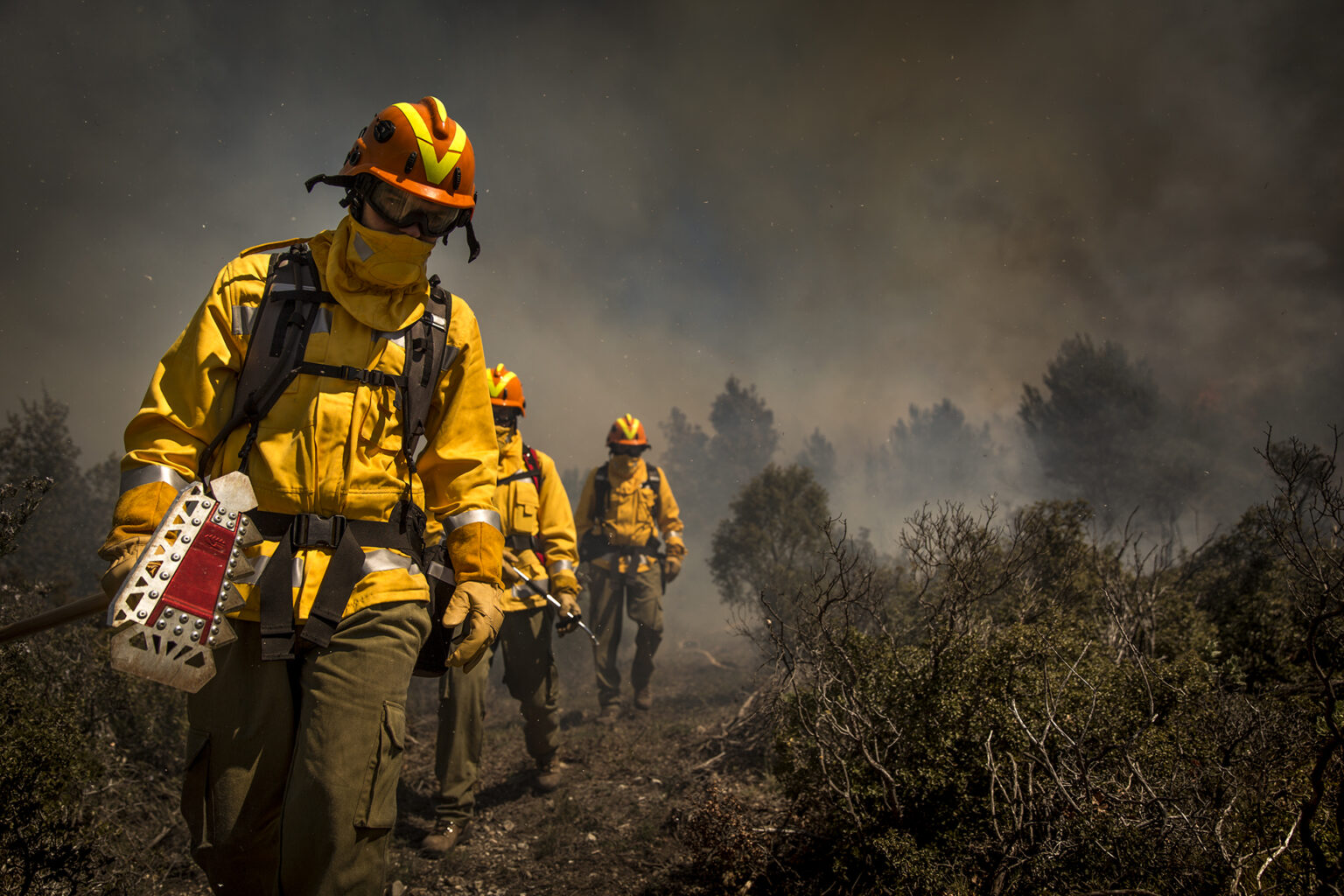Reducing the respiratory risks of forest firefighting
- September 20, 2022
- 7:20 am


Iain Hoey
Share this content
David Robinat Rosés, Communication Manager at Vallfirest looks at how wildland firefighters can protect against smoke
Forest firefighters are subjected to tremendous respiratory protection risks because they are exposed to countless harmful particles such as: heavy metals; to which a welder could be exposed, environments where there are hormones and proteins. There can be all kinds of viruses and bacteria like those to which a forensic scientist can be exposed because there may be decomposing organic matter.
There can also be any kind of spores and fungus such as a lumberjack might find; hydrocarbons and lubricants like a mechanic, there may be bacteriological and chemical nuclear traces equal to those found by a military man, obviously all the hydrocarbons and all the particles that a miner can find and decompositions of slow combustions and incomplete combustions as a smelter can find.
Earlier this year the World Health Organization (WHO) reclassified firefighters’ occupational exposure as carcinogenic. So today it is time to answer the question: How to protect yourself from the hazard of smoke?
Do you know what kind of pollutants are present in the smoke from forest fires? What is the minimum respiratory protection that wildland firefighters should wear? What filters are most convenient in initial attack, auction, prescribed burning and interface fire?
The respiratory risks of the forest firefighter are many and include: oxygen deficiency causing hypoxia or anoxia, carbon monoxide which is carcinogen, nanoparticles which are potentially carcinogenic and mutagenic, smoke and mist of particles above 0.4 microns which are harmful, formaldehyde which iscarcinogenic, organic gases and vapors which can betoxic and lethal, and gases and vapors from other families.
On many occasions we find ourselves faced with the paradoxical situation that forest firefighters must go to protect natural spaces without paying attention to their self-protection. The derivatives that we find of not using respiratory protection against these pollutants are immediate respiratory accidents that can cause occupational diseases in the medium or long term, including asthma and cancer.
The problem is that just as one can have an accident at work with one hand and lose it or lose a foot or even lose the sight of one eye, it is not as invalid as a respiratory insufficiency contracted in the medium long term (15-20 years) since this causes a lack of quality of life at the end of our working life which should not be compromised. Respiratory protection has EPP3 quality since there is a risk to life as a person cannot live without lungs. Therefore, when choosing which to equip forest firefighters with, the helmet, respiratory protection and a certain type of clothing should all be category three.
The pollutants
Particles are the main contaminant present in forest fires. Its size is an indicator of its potential to cause health problems. Most of the particles in wildfire smoke are less than 0.6 micrometres in diameter.
Carbon Monoxide is produced by the combustion of wood or other organic materials. The lack of oxygen to burn generates this colourless, odourless, inaudible and highly toxic gas.
Formaldehyde and acrolein are the two most dangerous aldehydes found in wildfire smoke. They are produced in the incomplete combustion of inorganic materials such as plastics and polymers.
Nitrogen and sulphur oxide are two toxic gases that are produced during the combustion of hydrocarbons which can trigger breathing difficulties and asthma.
Benzene and other volatile organic compounds (VOC’s). The highest exposure levels have been found in diesel fuel combustion, including drip torch fuel.
The solutions
One option are disposable but reusable masks with P3 level and low respiratory resistance (99,975 particle filtration, with nanoparticle filtration and with control of organic gases and vapours, acid gases). These have been tested against viruses and bacteria and against splashes of blood fluids.
Within this category, Vallfirest offer the the VFT mask, which offers total protection of the face against radiation and incandescent particles, avoiding burns and reducing possible inhalation of contaminants thanks to its interchangeable active carbon filter with exhalation valve.
Another option are reusable half masks with interchangeable filters and ABEK1P3 activated carbon filters compatible with the test for formaldehyde included and organic, inorganic, acid and amine vapours and gases. The half mask features a P3 filter for particles, viruses, bacteria, bacteria, enzymes, hormones, fungi and proteins.
For this, there is Vallfirest’s Xtreme Mask which offers complete protection of the face and respiratory tract, preventing the inhalation of polluting particles, gases and vapours. It is a multipurpose device that allows firefighters to continue working safely in extreme situations.
Survival device mask with Chemical Oxygen for limited use entrapment in LACES manoeuvre. The Xtreme K from Vallfirest is the only emergency respirator created specifically for forest fires. It is a closed-circuit, single-use, limited-use Chemical Oxygen-generating respirator for the protection of the respiratory tract in the event of an emergency or entrapment. It is a survival device with an autonomy of not less than 20 minutes.
It can be used in any number of situaitons including: during situational entrapment in a forest fire, in the presence of Carbon Monoxide, in the presence of gases and vapors, organic, inorganic, acids, amines, formaldehyde, mercury vapor and others, as well as against fumes, mists, harmful and toxic particles, viruses, bacteria, enzymes, hormones, proteins, nanomaterials and others. It can also be used as a protective measure against Possible hypoxia, anoxia, or respiratory tract burns.
At Vallfirest we know the importance of respiratory protection because we are aware of how harmful occupational exposure of forest firefighters can be which the recent classification of firefighting as being carcinogenic by the WHO goes to show. This is the reason why we have spent years improving our products in relation to respiratory protection and we will continue to do so in order to be able to continue offering the best solutions.



